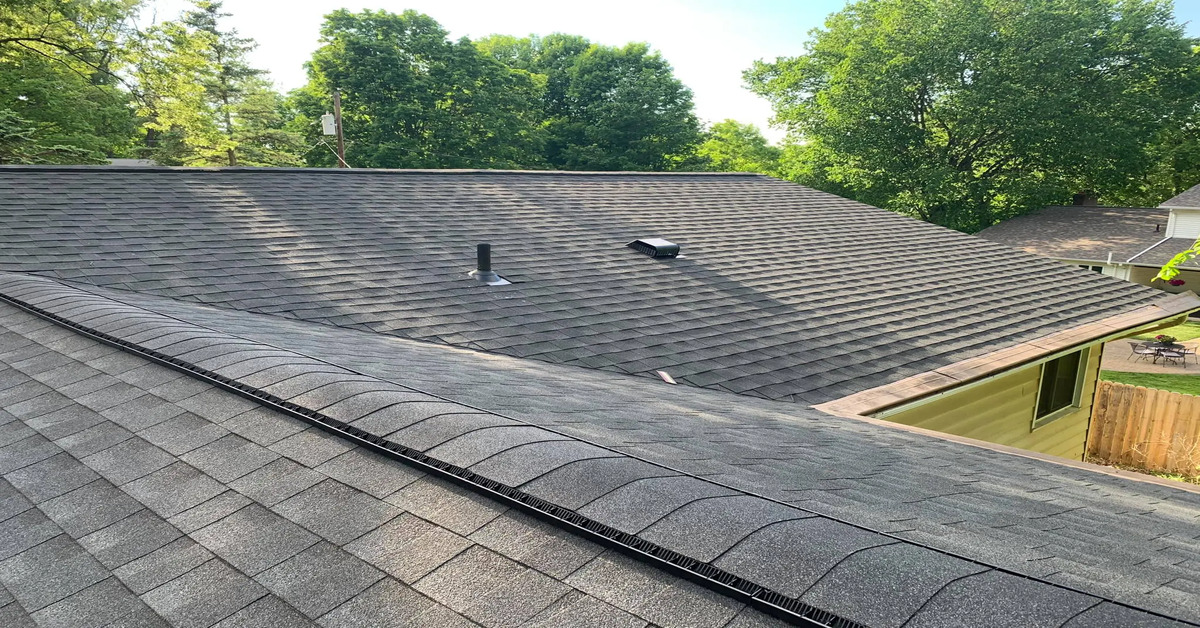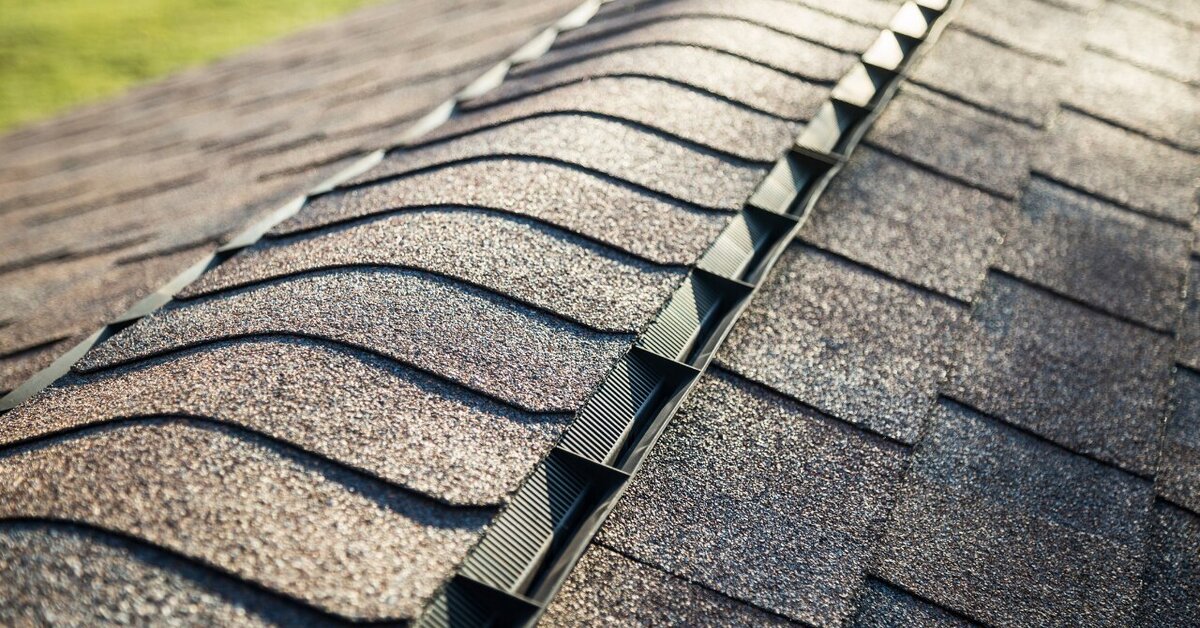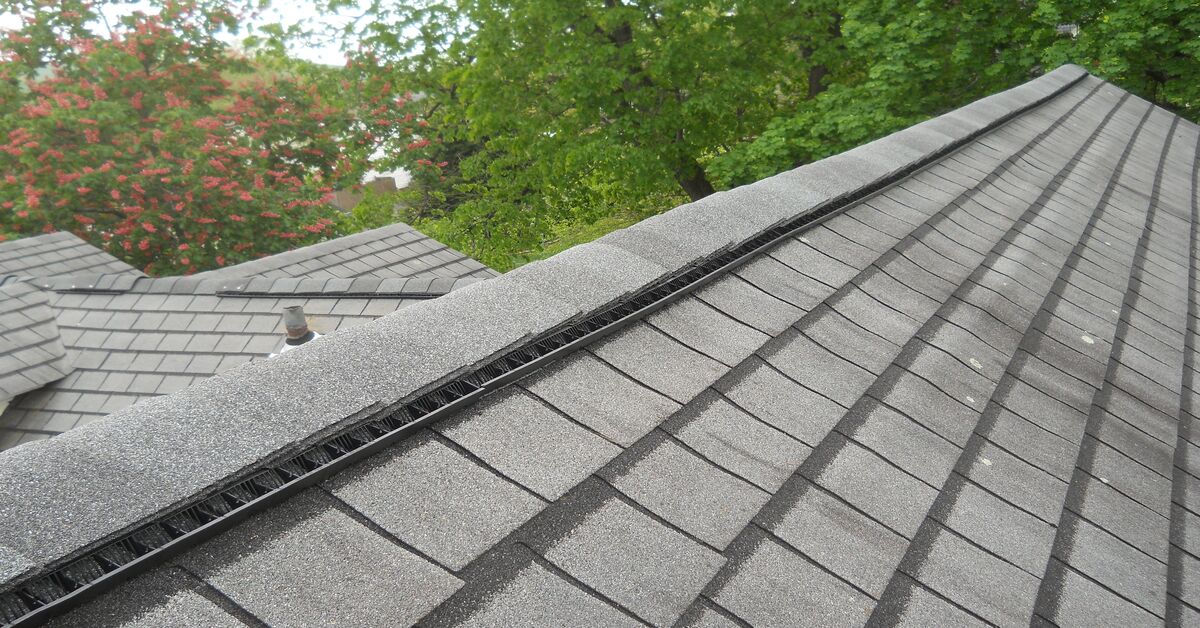

Having adequate roof ventilation in your home is something you should prioritise.
Roof ventilation is essential because it helps remove excess heat and moisture from the attic, reducing the risk of damage to the roof and the attic space. Additionally, proper ventilation can help extend the roofing material’s life and improve the building’s energy efficiency.
However, choosing the proper roof ventilation for your home can vary depending on many factors, including how old your home is, the style of your roof, and the roofing materials used.
In this blog, we’ll take a look at ridge vents in particular, assessing their pros and cons. We” try to answer the question, “Should ridge vents be used in houses?”
What are ridge vents?
Several different vent types are available for your roof ventilation system to bring a natural, continuous airflow to your roof space. Different vent types include roof tile vents, eaves/soffit vents, lap vents, whirlybirds, and ridge vents.
But what is a ridge vent?
Ridge vents are a type of roof ventilation that you can install along the peak, or ridge, of a roof. They are typically made of plastic or metal and are designed to facilitate air movement in roof spaces. They allow hot air and moisture to escape from the attic while also allowing fresh, cool air to enter.

What is the purpose of ridge vents?
When hot air and moisture build up in the attic, it can cause damage to the roof, shingles, and other structural components, as well as create an ideal environment for mould and mildew growth.
By providing a means for this hot air and moisture to escape, a ridge vent can help to reduce the risk of damage and improve the overall health and safety of the attic space. Additionally, allowing fresh air to enter the attic can help reduce the temperature inside the attic, which can help reduce the load on the cooling system during summer and increase the energy efficiency of the building.
What roofing materials can be used in conjunction with ridge vents?
Ridge vents can be used in conjunction with various roofing materials, including asphalt shingles, wood shingles, metal roofing, and tile. Some roofing materials, such as slate and concrete tile, may require additional modifications to install a ridge vent properly.
What types of buildings use ridge vents?
Since they are placed along a ridge, you’ll often find ridge vents in residential homes. Ridge vents are typically installed on gable roofs, which have a peaked ridge at the top, but not all types of residential roof designs can have them, such as flat roofs or mansard roofs. Ridge vents are not often used for light industrial buildings because industrial roofs don’t tend to have sloped roofs either. Industrial buildings also tend to have different, more substantial ventilation requirements anyway.
But, the question remains, how helpful are ridge vents for residential buildings and should you install them in your home?
Should ridge vents be used in houses?
Ridge vents can be used in houses in Australia, but it is crucial to consider the specific climate and weather conditions of the area. Each home is different, and your ventilation needs may vary.
Ridge vents are a popular choice for roof ventilation in Australia, but it is important to consult with a professional roofing contractor or building inspector to determine the appropriate type and amount of ventilation for a specific building and location. They will be able to consider factors such as the type of roofing material, the slope of the roof, the insulation, and the local weather patterns to determine the most effective ventilation solution.

Let’s run through some of the pros and cons of a ridge vent.
What are the pros and cons of a ridge vent?
How effective is a ridge vent at removing condensation and improving the ventilation of your roof space?
General pros:
- Works all year round
- Not reliant on a certain wind direction
- Effective in cooling the house if installed properly
- Easy to install and maintain
- Does not affect the aesthetics of your home
- Rodents can’t get into your home through a ridge vent
General cons:
- Often won’t be effective on its own (will need to be part of a ventilation system)
- It can be expensive to install
- can experience water leakage in heavy rainfall
- Needs to be installed in a roof peak (so not applicable to some roofs)
The lowdown – how effective are they?
The short answer is that a ridge vent is relatively ineffective if not supplemented with other ventilation.

Ridge vents work best when used in conjunction with a system that forces hot air into the ceiling cavity and out through the ridge vent.
Whereas some ventilation systems naturally create a vacuum or stack effect, a ridge vent does not, so hot air must be forced towards them. This is frequently accomplished by using soffit or eaves vents to create a flow of air up through the eaves and out through the ridge, or by using a powered ventilation system such as a whole-house fan.
The best roofing ventilation system -RapidRidge
RapidRidge is an example of a system that utilises a ridge vent as part of a broader ventilation system for optimum results.
Rapid Ridge from Evobuild is a type of ridge vent that is designed to be installed quickly and easily on a variety of roofing materials, including asphalt shingles, wood shingles, metal roofing, and tile. RapidRidge features an aerodynamic design that helps to improve airflow and reduce resistance, which can help to keep attics cooler and reduce the risk of damage from heat and moisture. Rapid Ridge is made from durable, weather-resistant materials and is designed to provide long-lasting performance.
The critical factor of the successful system is that it utilises a vent placed under the eaves board to create a natural passive cooling system throughout the roof space.
Read more about the installation process of RapidRidge with ventilation here.
